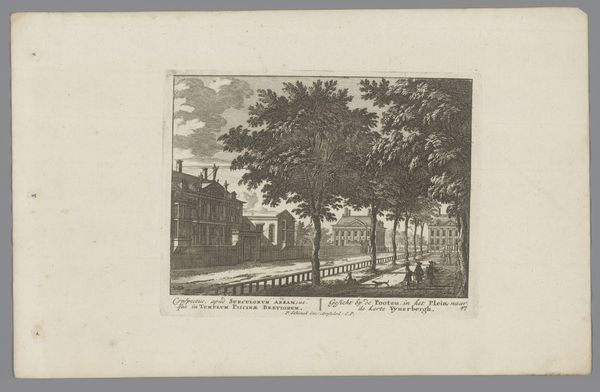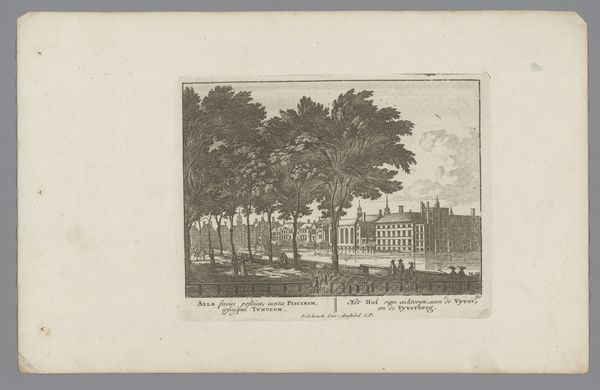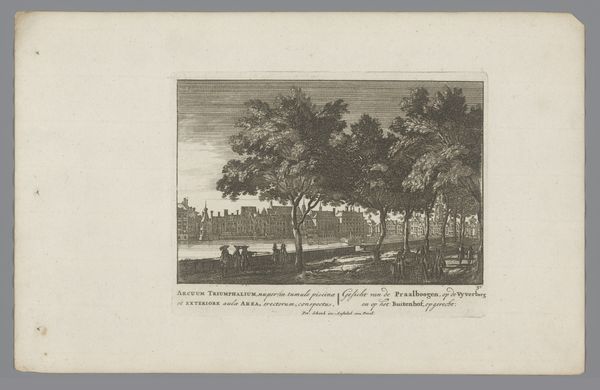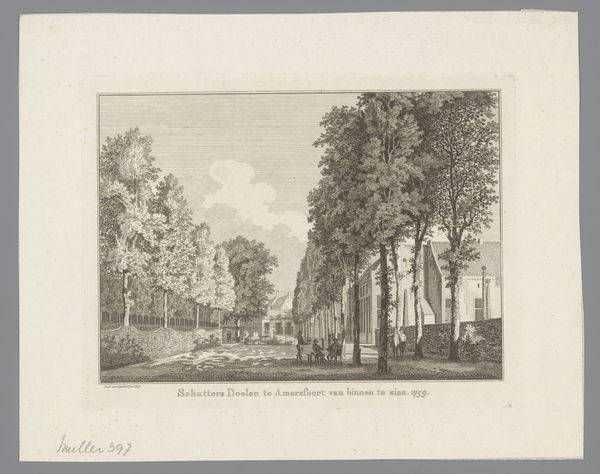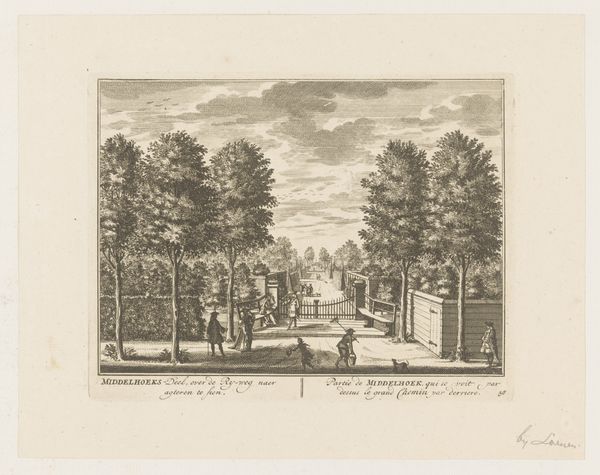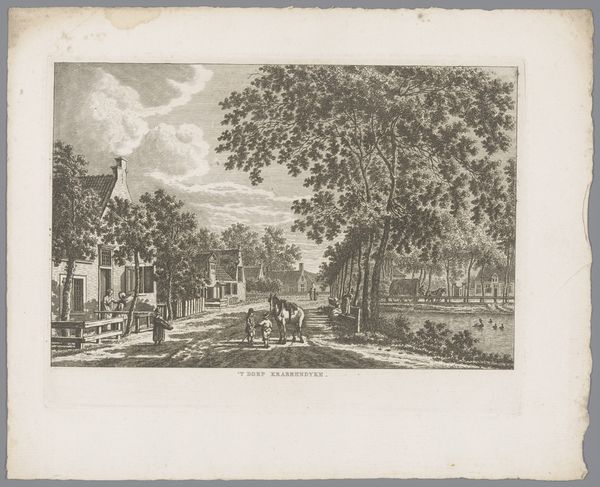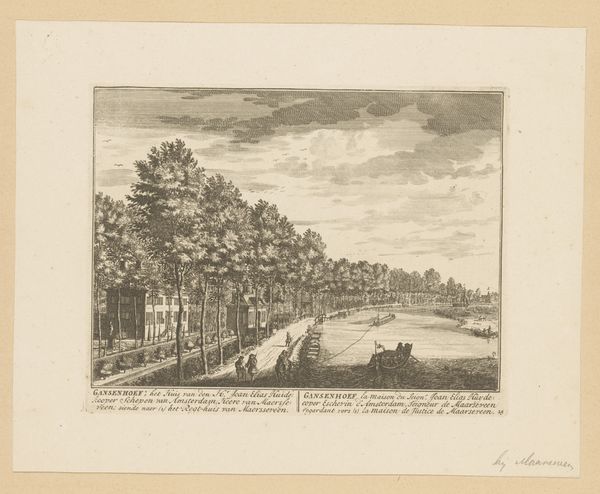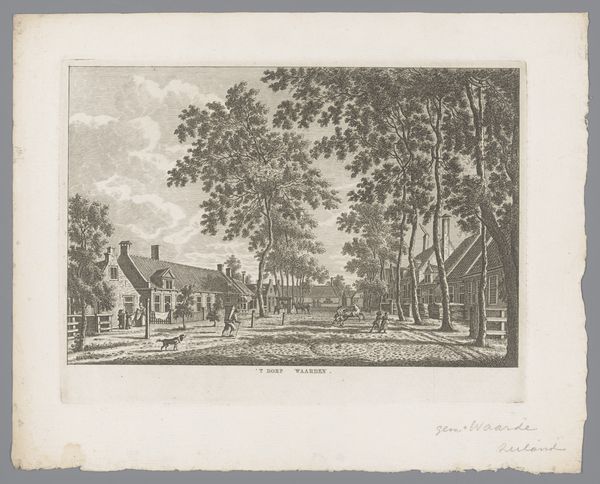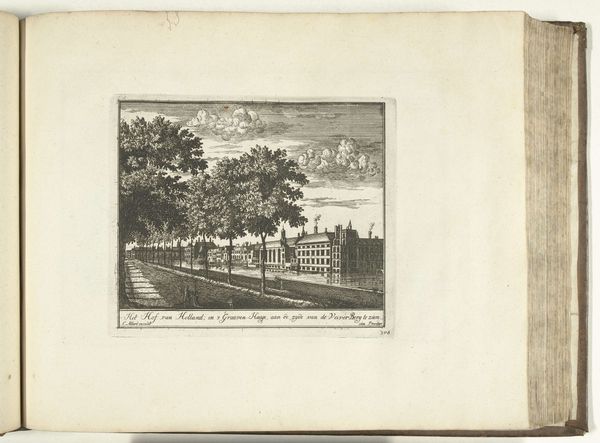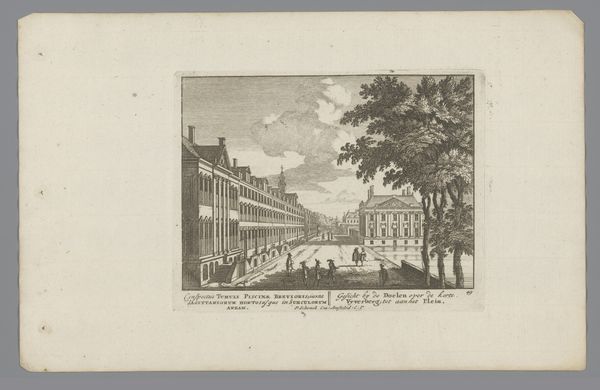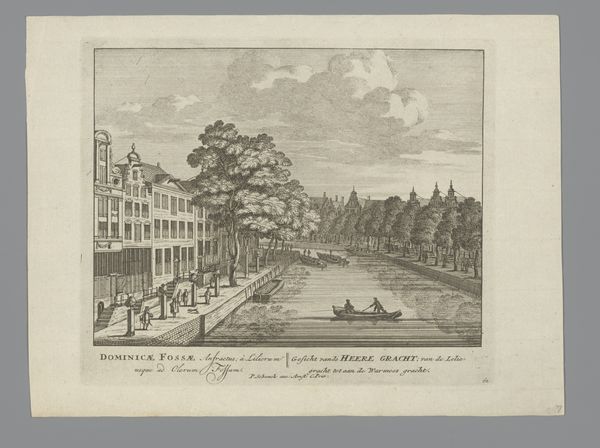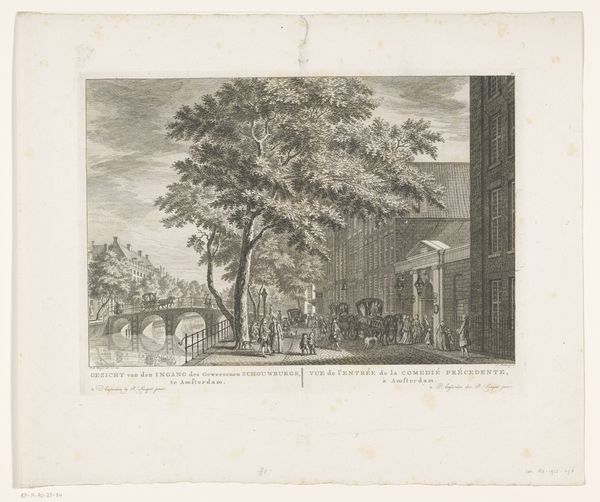
print, engraving
#
baroque
# print
#
landscape
#
engraving
Dimensions: height 129 mm, width 168 mm
Copyright: Rijks Museum: Open Domain
Curator: This engraving by Jan van Call, dating back to approximately 1700, presents the Oranjerie at Park Sorghvliet in The Hague. What’s your first take? Editor: It's so orderly. The layout, the rows of trees… it screams control. I'm curious what level of manual labor would be required to keep all those elements so rigidly shaped. Curator: Order indeed, it embodies the Baroque era's fascination with classical ideals, reflecting a controlled landscape symbolizing human dominion over nature. The very idea of an Oranjerie suggests this: a place to cultivate exotic plants, emblems of worldly power and access. Editor: It strikes me that even the process of engraving – cutting lines into a metal plate – mimics the regimentation on display. Someone meticulously etching these symmetrical designs by hand... think of the hours! The very material of the print embodies that need for control and imposed order. Curator: The sharp lines and meticulous detail amplify the cultural importance of the space. The presence of figures in the foreground, leisurely strolling, offers a narrative – portraying a lifestyle afforded by wealth and power. The orangery transforms into a status symbol. Editor: Absolutely, and the print medium makes that symbol reproducible. This image wasn’t just for the owner of the Oranjerie; it's for circulation, a dissemination of their status through the sheer mechanics of its production. A commodity, ultimately, reflecting a culture of consumption and display. Curator: Perhaps the artist aimed to capture an aspirational space, designed for more than botanical appreciation, and intended as a showcase of cultural and societal power. Editor: Right. From the controlled landscape to the controlled labor and manufacturing that represents it, we can understand the period’s intense need to classify and shape everything into a specific aesthetic, and beyond that, a distinct class structure. Curator: It highlights how art, even a seemingly simple landscape print, can speak volumes about the culture that produced it. Editor: And reminds us that even images rooted in pleasure have material and societal costs attached.
Comments
No comments
Be the first to comment and join the conversation on the ultimate creative platform.

